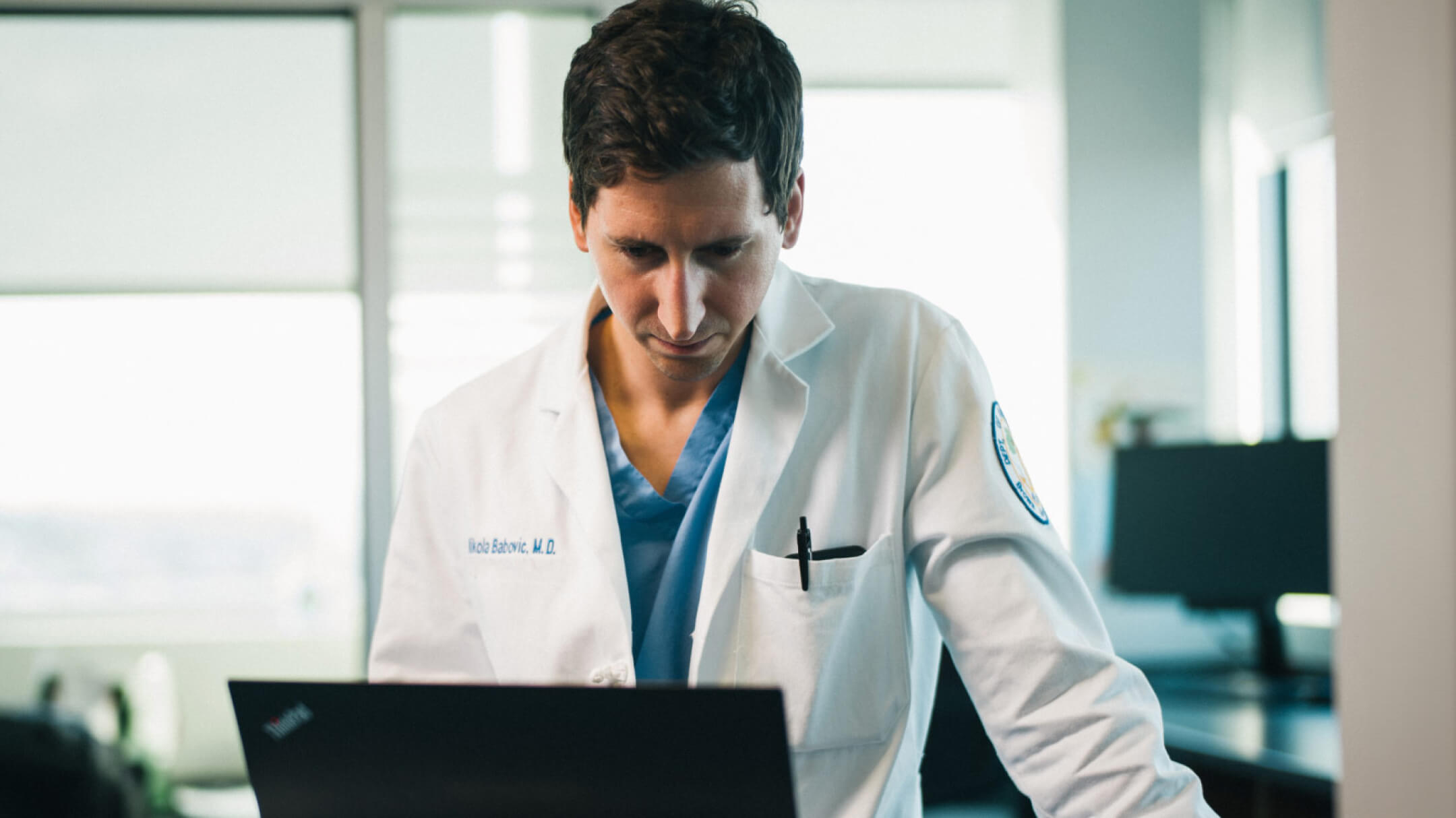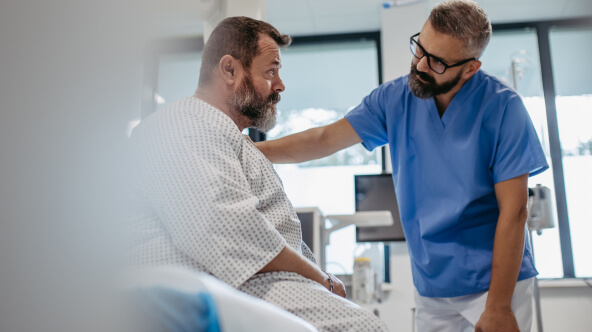
4 Ways technology can help your organization implement value-based care
Managing value-based care and risk-based programs is complex
Healthcare organizations are increasingly moving deeper into value-based care (VBC) and risk-based programs, with McKinsey & Company estimating that 90 million lives will be in value-based care models by 2027, almost doubling from 43 million in 2022.1 But with growing participation in value-based care and risk comes growing complexity.
To succeed in their value-based contracts, a healthcare organization may be required to excel in everything from coordinating care management across providers and care settings, to reporting on a broad range of metrics to multiple payers with different sets of requirements. And with reimbursements and a growing share of revenue hinging on success in value-based and risk-based programs, the health of your business — not to mention your patients — is at stake.
Technology plays a crucial role in any organization’s ability to reach their value-based care goals. Successful value-based care initiatives require a seamless exchange of data among various players, including labs, payers, hospitals, imaging centers, pharmacies, and other providers and care team members, whether they’re part of your organization or another. So, how can technology help simplify?
The essential role of experiential interoperability
Interoperability and raw data exchange are table stakes today, but far too many providers still struggle with finding the patient information they need, at the exact moment they need it. Clinicians need a complete medical history of the patient in front of them to make the best care plan. But that wealth of data can often lead to information overload. With too much raw, disorganized information at their fingertips, clinicians can struggle to find the patient data that’s most important and most relevant to the current encounter.
Your EHR can streamline the process of sifting through all that patient data, serving up the right information to your clinicians, at the right time. By synthesizing program requirements and simplifying the clinical workflow, technology can help you improve patient outcomes and achieve success in your value-based and risk-based contracts. Here’s how.
Proactively gain actionable insights into care gaps and diagnosis gaps at the moment of care
Improving patient outcomes is the key to success in quality programs. You need to make sure your clinicians have all the information they need to not only take excellent care of patients, but simultaneously keep an eye on various health plans’ requirements.
Your EHR can help organize and manage this for your clinicians by identifying care and diagnosis gaps and proactively flagging them at the moment of care. It can also help clinicians determine what actions are needed to close those gaps and perhaps most importantly, do this all without adding to their administrative burden.
While some healthcare technology requires clinicians to proactively dig through this data, your EHR could instead be proactively flagging it to your clinicians, minimizing their frustration and time spent on administrative work and increasing the likelihood they’ll be able to close those gaps.2 When technology serves up care and diagnosis gap information at the point in the clinical workflow where it would be natural for clinicians to act on it, clinicians address 40% of those gaps. In the context of quality programs where closing gaps is tied to revenue and reimbursements, that represents a huge step forward in improving patient outcomes as well as your bottom line.
Let’s say your patient comes in to see a primary care doctor for their annual wellness visit. The patient has diabetes, so there are several key indicators the doctor needs to keep an eye on. The patient can’t remember whether they had their vision checked last year or two years ago, but the doctor’s EHR system has already flagged that the patient is due for an eye exam. The EHR has also surfaced other clinically relevant information, like the fact that the patient was recently treated at urgent care for a foot ulcer, a diabetes complication. The doctor can then follow up on that recent visit and ensure their patient is recovering and receiving all the care they need.
For this to be possible, you need a high level of interoperability. Your technology shouldn’t just be pulling in data from all the different sources, but it can actually synthesize payer data and quality program requirements to help ensure your clinicians have all the information they need, without creating information overload.
Track progress on quality program requirements to help maximize revenue
The work to improve patient outcomes doesn’t start and finish with the patient encounter, of course. You can also leverage the data in your healthcare technology between patient visits to make sure you’re staying on top of all the requirements for every program you participate in. Data analysis and reporting for value-based care is complicated. That’s why 90% of healthcare organizations who are adding new technology to support their value-based care goals say they added data analytics or reporting platforms.3
For most healthcare organizations, participation in value-based care doesn’t fall neatly into a single payment model. One organization might see Medicare Advantage patients, participate in MIPS, and run a chronic care management program, all while exploring moving into full downside risk. Each program comes with its own set of requirements, and it can be an administrative headache to stay on top of everything.
Your EHR can help make sure you’re on track with each program you participate in, so your team doesn’t have to juggle quite as many tasks. Tapping into comprehensive care gap reporting is a great place to start. EHRs can leverage payer data to find patients with open care gaps. And once you’ve identified those patients, you can initiate automated outreach campaigns through your patient engagement solution to help close those gaps.
For example, one high-performance physician group used their healthcare technology to identify which eligible patients hadn’t had a Medicare Annual Wellness Visit and execute an automated outreach campaign to engage those patients. Within 45 days, more than 30% of the patients contacted took action to schedule an appointment, helping the group make significant progress in their quest to close care gaps.
Your technology can also track changes in quality program requirements, helping you stay up to date with what your payers are looking for. As requirements evolve, your EHR can integrate the new regulations and clinical practice guidelines into the clinical workflow and reporting dashboards, minimizing the work needed for your team to stay on track. Reporting dashboards are crucial to help track progress throughout the year. Those dashboards can help pinpoint areas for improvement, helping you to maximize revenue.
Considerations for the future of value-based care
The value-based care landscape is growing and changing rapidly as programs evolve and adoption increases. Though it’s impossible to know exactly what the landscape of value-based care will look like in the future, one thing is clear: data insights and reporting will remain crucial. The burden on clinicians to sort through the data and keep track of everything is high, but your healthcare technology can help. Invest in the technology needed to simplify value-based care today and ensure that your systems are flexible enough to adapt as requirements change in the future.
1. What to expect in US healthcare in 2024 and beyond, McKinsey & Company, Jan 2025, https://www.mckinsey.com/industries/healthcare/our-insights/what-to-expect-in-us-healthcare-in-2024-and-beyond?stcr=FEFACC03D40F492EBD8401B5DCEEB6C3&cid=other-eml-alt-mip-mck&hlkid=2d8461c861f644cdb13cae55b6af9283&hctky=14669808&hdpid=edd3998f-a0c6-45fa-86c6-b0cd71574e4d
2. Based on athenahealth data for twelve months ending Dec. 2023.
3. MGMA, June 2022, Stat Poll; https://mgma.com/mgma-stats/getting-a-handle-on-quality-and-value-based-analytics-in-your-medical-group-practice











